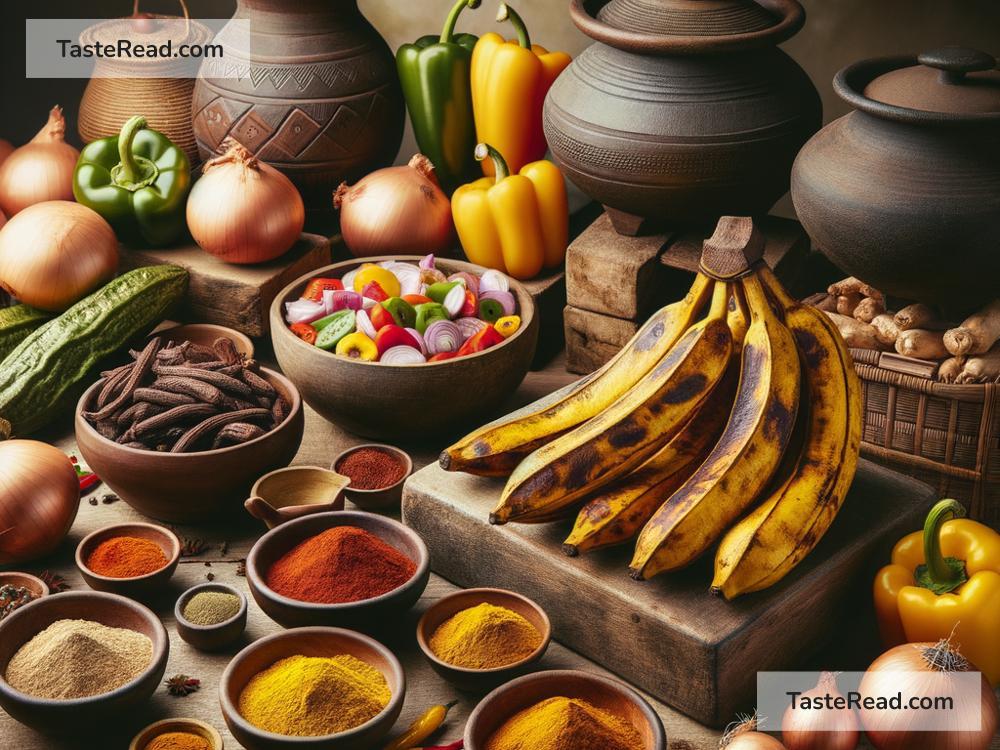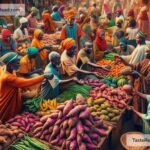The Fascinating Story of Plantains in West African Cooking
Plantains are an important part of West African cooking, and their story is as rich and fascinating as the dishes themselves. Often mistaken for bananas because they look so similar, plantains are truly unique. They are larger, firmer, and require cooking to bring out their delicious flavors. From everyday meals to festive celebrations, plantains play a central role in the food culture of many West African countries like Nigeria, Ghana, Senegal, and Ivory Coast.
Plantains are loved for their versatility. They can be fried, boiled, grilled, baked, or mashed, and their flavor changes depending on how ripe they are. Ripe plantains are soft and sweet, while unripe ones are starchy with a mild taste. Whether they are served as a snack, a side dish, or part of the main meal, plantains bring warmth and richness to every West African meal. But how did this humble fruit become so embedded in the region’s cuisine?
Origins and History of Plantains in West Africa
Plantains are believed to have originated in Southeast Asia, specifically around the Malay Archipelago. They spread across the world through trade and exploration, with African traders and European colonists helping plantains find their way to West Africa. Historical records suggest that plantains were introduced to West Africa hundreds of years ago, during the time of the transatlantic slave trade and colonial expansion.
Once plantains arrived, local people quickly embraced them. The fruit adapted well to the tropical climate and soil, making it easy to grow in West Africa. Farmers planted it alongside other staple crops like yam, cassava, and maize. Over time, plantains became an essential part of the West African diet. They also gained cultural significance as different communities developed their own special ways of cooking and serving the fruit.
The Many Ways to Enjoy Plantains
West African dishes demonstrate the endless creativity people bring to cooking plantains. The recipes vary widely across the region, reflecting local traditions, tastes, and ingredients.
One of the most popular plantain dishes is fried plantains, known as dodo in Nigeria and kelewele in Ghana. For dodo, ripe plantains are sliced and fried until golden brown, creating a soft, sweet snack or side dish. In Ghana, kelewele takes fried plantains to the next level by seasoning them with spices like ginger, garlic, and chili before frying. The result is a spicy, flavorful snack that locals enjoy at roadside stalls and parties.
In Liberia and Sierra Leone, plantains are often boiled or steamed. These dishes feature unripe plantains, which retain their starchy texture, making them a filling accompaniment to hearty stews. Plantains are also mashed and combined with vegetables, fish, or meat to create comforting, one-pot meals.
Another famous recipe is plantain chips, thinly sliced plantains that are fried until crispy. This snack is enjoyed across West Africa and loved for its crunchiness and salty flavor. Plantain chips are commonly sold by roadside vendors and packaged for supermarkets, catering to people of all ages.
West African cooks also use plantains to create unique and festive meals. For example, in Ivory Coast, a dish called Foutou Banane combines mashed plantains with cassava, transforming these simple ingredients into a soft and stretchy dough served alongside rich soups or sauces. This dish is often prepared for special occasions or family gatherings.
Plantains and Their Cultural Significance
Plantains are not just food—they are a symbol of West African hospitality and tradition. Sharing plantain dishes is a way for families to come together, celebrate life, and connect with their heritage. When a guest visits, it’s common to serve them fried plantains or a dish that includes plantains as a gesture of welcome and generosity.
In festivals and ceremonies, plantains are often featured in lavish dishes that showcase the region’s culinary expertise. They are a reminder of how West African cooking turns humble, accessible ingredients into exquisite meals full of love and care.
Plantains also represent resilience. In West Africa, they thrive under challenging conditions and provide nourishment even in times of hardship. Their widespread availability has made them a lifeline for many communities, ensuring people have access to food in times of scarcity.
The Global Appeal of West African Plantain Dishes
Today, West African cuisine, including its plantain dishes, is gaining global recognition. Restaurants and food enthusiasts from around the world are embracing the bold flavors and warmth of dishes like kelewele, fried plantains, and plantain stew. Social media has helped spread awareness of these meals, with food bloggers and influencers sharing recipes and stories that celebrate the rich traditions of West Africa.
Plantains are particularly loved because of their versatility—not only in West African cooking but in cuisines worldwide. People everywhere are finding creative ways to incorporate plantains into desserts, tacos, and even breakfast dishes. This new enthusiasm for plantains links back to their deep roots in West African kitchens, reminding us of the cultural history they carry.
Conclusion
The story of plantains in West African cooking is a testament to the ingenuity and artistry of the people who have nurtured this ingredient for generations. From its introduction centuries ago to its central role in today’s meals, plantains have become a symbol of abundance, resilience, and cultural pride. Whether you’re tasting lightly spiced kelewele in Ghana or enjoying a plate of fried dodo in Nigeria, plantains invite us all to savor the traditions and flavors of West Africa.


